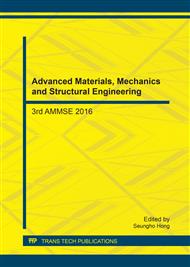p.208
p.214
p.220
p.224
p.229
p.235
p.241
p.246
p.251
Effect of Wind Turbine Blade Profile Symmetry on Ice Accretion
Abstract:
A multiphase numerical study has been carried out to understand the effects of wind turbine blade profile (airfoil) symmetry on resultant ice accretion. Two symmetric (NACA 0006 & 0012) and two non-symmetric airfoils (NACA 23012 & N-22) were used for this preliminary study. Based upon the airflow field calculations and super cooled water droplets collision efficiency, the rate and shape of accreted ice was simulated for rime ice conditions. Analysis showed higher air velocity along top surface of the non-symmetric airfoils as compared to symmetrical airfoils that also effects the droplet behavior and resultant ice growth. Results show that change in blade profile symmetry effects the resultant ice accretion. For symmetric airfoils, more streamlines ice shapes were observed along leading edge as compared to non- symmetric airfoils.
Info:
Periodical:
Pages:
229-234
Citation:
Online since:
February 2017
Authors:
Keywords:
Price:
Сopyright:
© 2017 Trans Tech Publications Ltd. All Rights Reserved
Share:
Citation:


